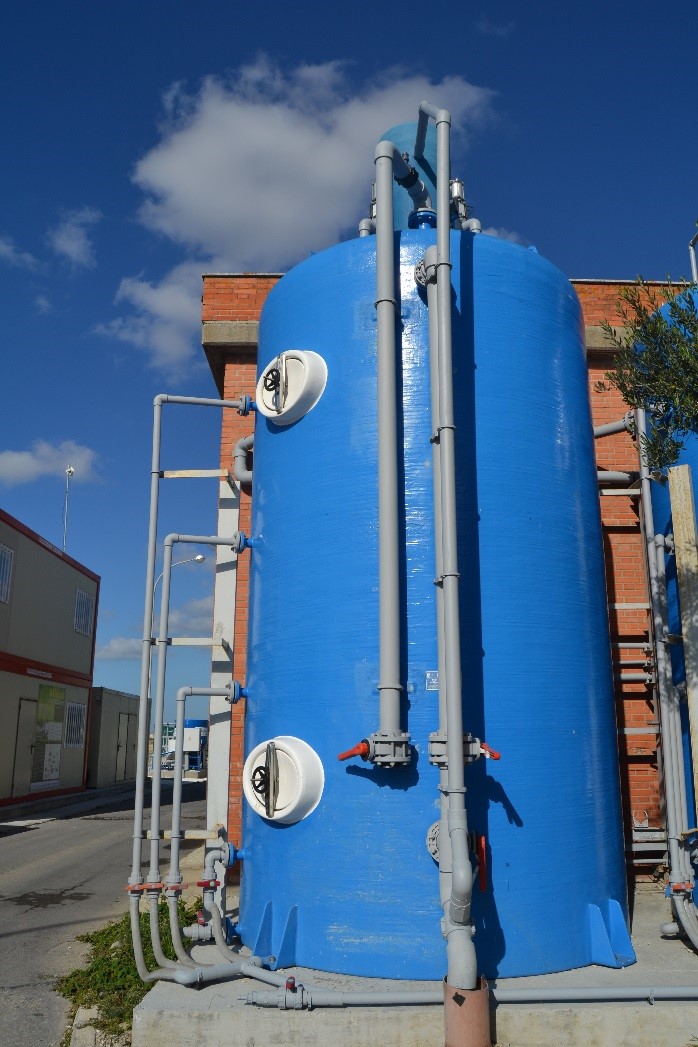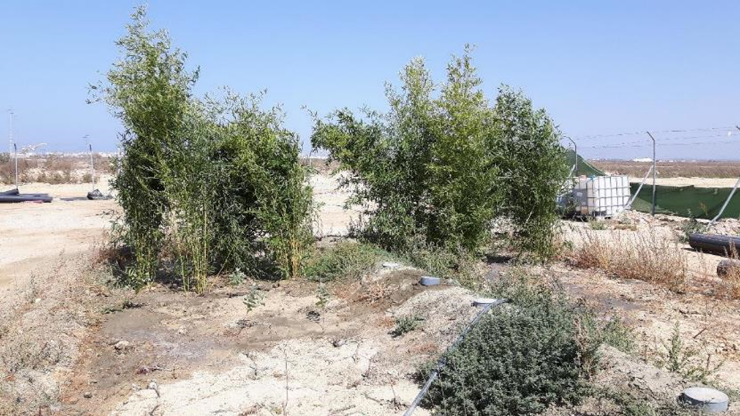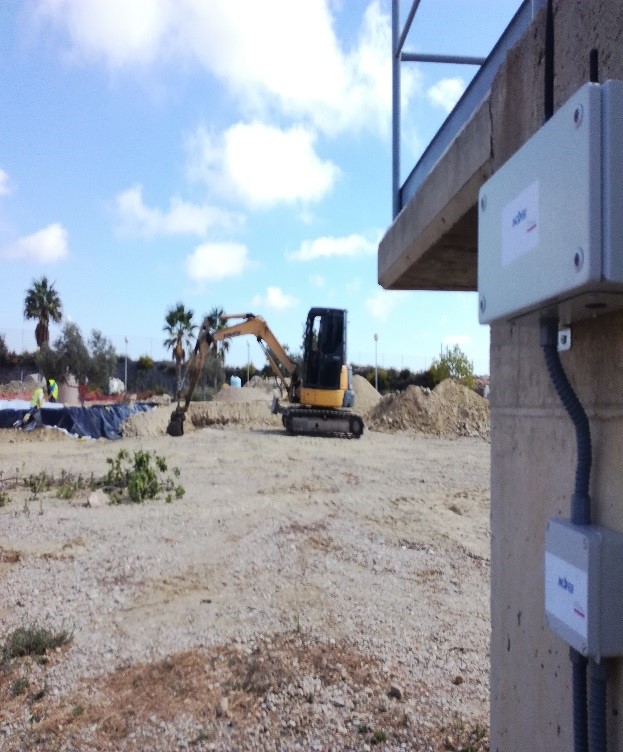Work in progress
The second case-study taking place in Spain aims at producing bio-plastics (PHA- Polyhydroxyalkanoates), bio-methane and recovering nutrients and irrigation water.
Bio-plastics production has been made through a two-stage anaerobic-photosynthetic system, using anaerobic pretreatment and High Rate Algae Pond (HRAP) systems. Project partner, IBET, performed PHA production lab tests using 2 PBR (photo-bioreactors) that simulate El Torno (Chiclana) wastewater treatment ponds with two different mixing systems: Jet mixing and paddle wheel. The tests have been conducted with real fermented wastewater from AQUALIA and results indicated a successful enrichment of the reactors with 15-20% PHA accumulating photosynthetic mixed cultures.
The jet mixing pond was selected to initiate the PHA production at demo scale. Currently AQUALIA is operating two UASB (20 m3 each) fed with molasses and pretreated wastewater obtaining a fermented effluent. Two Jet mixed ponds are being fed with the fermented waste and supplemented with fertilizer (N and P source). This fertilizer will be used until a centrate stream from the wastewater plant digestor becomes available. Demonstration results are regularly discussed amongst AQUALIA and IBET and compared with lab tests in order to progressively adjust the demo reactor operating conditions.

Upflow anaerobic sludge blanket reactor (AQUALIA)
AQUALIA have increased biogas production by at least 60%, optimizing physical pretreatment of microalgae and different co-sustrates, like molasses and sewage sludge.
The Demo scale plant at AQUALIA’s facility in Chiclana de la Frontera is composed of a 9.6 m3 raceway with an illuminated surface of 32 m2 interconnected to a 7 m3 settler and a 150 L absorption column. The cultivation broth is pumped from the raceway to the settler where the settled biomass is recirculated back to the raceway. The clarified effluent is pumped to the top of the absorption column, while raw biogas is sparged at the bottom countercurrently. Two different liquids to biogas ratios are tested at three different biogas flowrates in order to enhance biomethane composition using different wastewaters as a microalgae nutrient source.

HRAP and biogas upgrading system at Chiclana (UVA)
RECIRKU have elaborated the design and implementation steps for the evaporative systems, in Chiclana, to recover nutrients. New Phyllostachys aurea and Phyllostachys aureasulcata have been planted in August, in extreme conditions (very windy and up to 35 degrees). It has been possible with daily irrigation to keep a few of the stems in the plants green. A new pallet of potted willow was planted in November. Until the first of December, the western half part of the system had already received 18 m3 of digestate and the eastern part had received 27 m3 of digestate. Because it is very windy onsite, a lot of seeds from weed enter the facility. This causes some weeding work.

Evaporative system at Chiclana (RECIRKU)

Solar disinfection (AUTARCON) and planted filter (RECIRKU) in Almería
At the El Toyo (Almería) wastewater treatment plant, the reclaimed water will be reused for irrigation. Project partner, RECIRKU have implemented 5 planted filter systems for solids filtration and nutrient recovery, previous to solar disinfection by AUTARCON.
FINT, have been working on the steps to carry out the smart irrigation system based on the creation of an internet-based system (‘’Internet of Things’’ approach).


The sensing devices (soil and air sensor) and the IoT gateway are already in place while the conventional irrigation system and FINT’s irrigation controller will be timely deployed to control the re-treated water application. In details, the subsurface drip irrigation system will be installed and soil will be added on top of it. Last, the grass rolls will be transferred and planted so that the operation of the whole system begins.

















